Peek into the ancient narratives and prophecies surrounding Mount Seir, unveiling its profound significance in biblical history.

Mount Seir in the Bible
You might think that Mount Seir, merely a geographical location mentioned in the Bible, holds little significance beyond its topographical features. However, its historical and spiritual importance is deeply woven into the narratives of the Edomites and Israelites, offering insights into their tumultuous relationship and prophetic destinies.
As you explore the layers of stories and prophetic messages associated with Mount Seir, you'll uncover the complex interplay between geography and divine narrative that continues to resonate with scholars and believers alike. This journey through ancient texts and archaeological findings promises to illuminate the enduring legacy of this enigmatic mountain.
Key Takeaways
- Mount Seir serves as a significant biblical backdrop for events, including Israelite and Edomite narratives.
- Archaeological findings at Mount Seir provide insights into ancient trade routes, settlements, and religious practices.
- The region's unique ecology and landscapes are highlighted in biblical references, enriching its cultural and spiritual significance.
- Prophetic messages concerning Mount Seir in the Bible symbolize divine retribution and the complexities of human relationships.
Geographical Overview
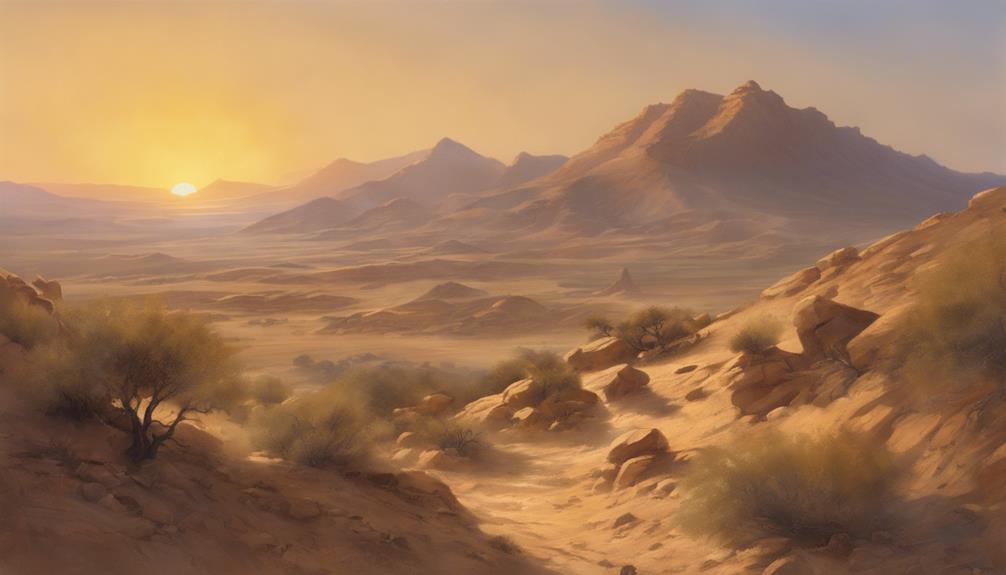
Where does Mount Seir lie within the tapestry of ancient landscapes, and what makes it stand out in biblical history? Nestled in a region rich with historical and cultural significance, Mount Seir's geographical location isn't just a marker on a map but a beacon of ancient narratives. Its unique mountain ecology sets it apart from other biblical sites, offering a diverse habitat that has supported human and wildlife populations for millennia. The rugged terrain and varying altitudes have fostered a distinct biosphere, making it a subject of interest for scholars and environmentalists alike.
In the context of modern tourism, Mount Seir presents an intriguing destination. Its landscapes, steeped in history, attract visitors from around the globe. The interaction between its natural beauty and the layers of stories embedded in its soil creates a compelling allure. Tourists aren't just spectators but participants in a continuing story, traversing paths that intertwine nature and narrative. This blend of mountain ecology and cultural heritage positions Mount Seir as a pivotal point of interest, bridging the gap between ancient tales and contemporary exploration.
Historical Significance
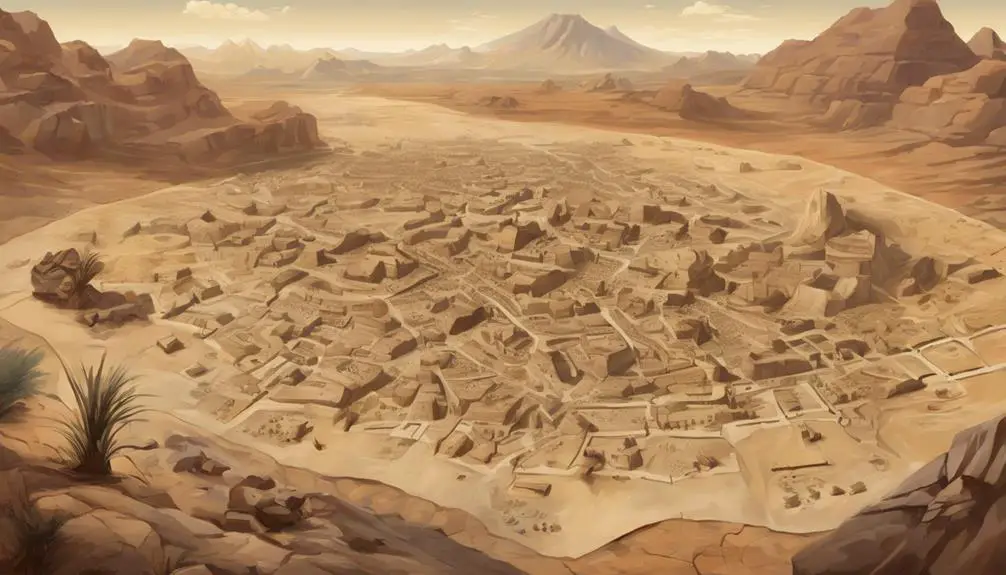
Delving into the historical significance of Mount Seir, you'll uncover a tapestry of ancient events and cultural shifts that have left an indelible mark on biblical history. Archaeological excavations in the area have been pivotal in understanding the timeline and the cultural impact of those who inhabited Mount Seir.
The discoveries made through these excavations provide a clearer picture of the ancient communities, their way of life, and their interaction with neighboring tribes and territories. Here are four key aspects revealed by archaeological efforts:
- Settlement Patterns: Excavations have unearthed evidence of early settlement patterns, showing how communities were structured and evolved over time.
- Trade Routes: Analysis of artifacts indicates that Mount Seir was a nexus for trade routes, bridging cultures and economies.
- Religious Practices: Findings have shed light on the religious practices and rituals, highlighting the cultural impact and spiritual significance of Mount Seir to its inhabitants.
- Conflict and Alliance: Archaeological records have also provided insights into the conflicts and alliances that shaped the region's history, offering a deeper understanding of its strategic importance.
These aspects, when pieced together, reveal the intricate mosaic of human history that Mount Seir embodies, underscoring its significance beyond mere geographical features.
Biblical References

Throughout the biblical narrative, Mount Seir holds a significant place, serving as a backdrop for numerous events that shaped the faith and practices of its people. Its mention spans from the journeying of the Israelites to the complex geopolitical dynamics of neighboring nations. The spiritual symbolism attributed to Mount Seir is profound, often reflecting themes of confrontation, judgment, and divine intervention. For instance, its rugged terrain and imposing presence have been interpreted as metaphors for spiritual challenges and moral testing.
The narrative themes surrounding Mount Seir are equally intricate, weaving through the fabric of biblical history with lessons on obedience, faith, and the consequences of straying from divine commandments. You'll find that prophets, in their oracles, frequently use Mount Seir as a reference point, not just in a geographical sense, but as a symbol for broader spiritual lessons. This multifaceted role enriches the biblical narrative, offering layers of meaning that extend beyond the historical into the realm of the allegorical.
In exploring Mount Seir's biblical references, you're delving into a rich tapestry of spiritual symbolism and narrative themes that continue to resonate with readers, offering insights into the enduring power of these sacred texts.
Edomites and Israelites
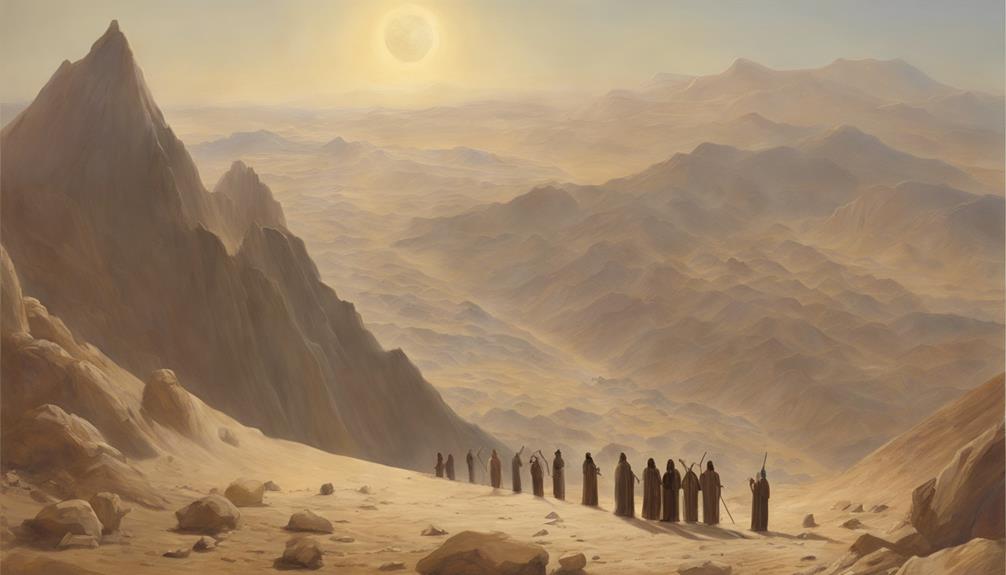
The relationship between the Edomites and Israelites, deeply intertwined through both kinship and conflict, emerges as a pivotal theme in the biblical narrative surrounding Mount Seir. While they shared genealogical roots, tracing back to Esau and Jacob respectively, these two groups often found themselves at odds, illustrating a complex tapestry of alliance, enmity, and cultural divergence.
Key factors contributing to their tumultuous relationship include:
- Genealogical roots: Despite descending from twin brothers, the divergent paths of Esau and Jacob set the stage for future conflicts.
- Territorial disputes: The strategic location of Mount Seir often became a battleground for control, leading to frequent skirmishes between the two.
- Cultural differences: Over time, distinct cultural identities formed, further driving a wedge between the Edomites and Israelites.
- Political alliances: Shifts in power dynamics and alliances with other Near Eastern entities often exacerbated tensions.
Analyzing these elements reveals that the relationship wasn't merely about sibling rivalry but underscored by significant geopolitical, cultural, and familial complexities. By delving into these intricate dynamics, you grasp a deeper understanding of the historical and biblical significance of the Edomites and Israelites' interactions.
Prophetic Messages
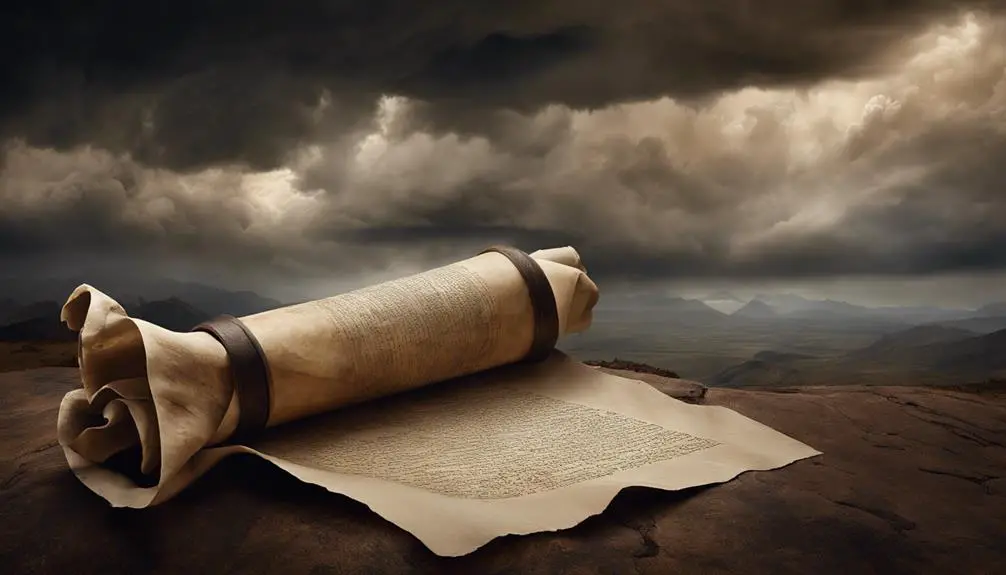
Within the tapestry of biblical narratives, prophetic messages concerning Mount Seir stand out, offering insight into God's communication and intentions for its inhabitants and their neighbors. These messages, often delivered through prophets like Ezekiel, contain layers of meanings that scholars and theologians have analyzed for centuries. You'll find that modern interpretations of these prophecies delve into not just the literal events predicted but also the symbolic meanings behind them, offering a rich field of study for those interested in biblical symbolism and its implications for understanding historical relations.
For instance, the prophecy in Ezekiel 35, which condemns Edom for its hostility towards Israel, serves as a case study in divine justice and the moral responsibilities of nations. Here, Mount Seir isn't just a geographical location; it's a symbol of enmity and divine retribution. Modern scholars suggest that such prophecies underscore the interconnectedness of all communities and the consequences of their actions towards each other.
In analyzing these prophetic messages, you're not just uncovering past sentiments; you're also invited to reflect on the symbolic meanings that continue to resonate in contemporary discussions on justice, morality, and community relations.
Frequently Asked Questions
How Has the Concept of Mount Seir Evolved in Modern Religious or Spiritual Interpretations Outside of Traditional Biblical Contexts?
You're exploring how the concept of Mount Seir has transformed in modern spiritual circles.
Modern interpretations often imbue it with spiritual symbolism, detaching from its traditional biblical narrative.
This shift reflects broader trends in spirituality, where historical or geographical elements gain new meanings.
For you, understanding this evolution involves analyzing how these interpretations reflect changes in spiritual thought, emphasizing personal growth and enlightenment over historical accuracy.
This analysis offers insight into contemporary spiritual practices and beliefs.
Are There Any Notable Archaeological Discoveries in the Mount Seir Region That Challenge or Confirm Historical Accounts Mentioned in the Bible?
You're diving into whether archaeological finds in the Mount Seir area back up or question biblical stories. Through pottery analysis and inscription decoding, researchers have unearthed artifacts that either align with or dispute historical narratives.
These findings offer a nuanced perspective, challenging traditional interpretations. While some discoveries confirm aspects of ancient texts, others introduce new questions, emphasizing the complexity of piecing together history from physical remnants.
How Do Contemporary Local Communities Around the Mount Seir Area View and Interact With This Historical and Biblical Landmark?
You'll find that contemporary local communities around Mount Seir actively engage with the area through local tourism and cultural festivals. These activities not only boost the local economy but also preserve and celebrate their rich heritage.
Can You Explore the Ecological and Environmental Significance of the Mount Seir Region and Its Impact on the Surrounding Areas?
Imagine standing amidst a landscape where each rock and crevice tells a story of ecological significance. The Mount Seir region isn't just another area; it's a pivotal battleground against climate change and biodiversity loss.
Its unique flora and fauna contribute to the global ecosystem in ways that are crucial yet often overlooked. Analyzing its ecological role provides insights into how it influences climate patterns and supports biodiversity in surrounding areas, serving as a natural haven.
What Are the Similarities and Differences in the Depiction of Mount Seir in Various Religious Texts Outside of the Bible, Such as in Islamic or Judaic Traditions?
You'll find that Mount Seir is fascinatingly portrayed in Islamic Eschatology and Judaic Mysticism, each offering unique perspectives.
In Islamic texts, it's often associated with end-times narratives, while Judaic traditions dive deep into its mystical significance, highlighting its spiritual importance.
While both traditions respect its sacredness, the differences lie in the narratives and symbolism used.
This exploration reveals how one geographical location can hold varied meanings across different religious contexts.
Conclusion
In unraveling the narrative of Mount Seir, you've journeyed through its rugged terrains, tracing the footsteps of the Edomites and Israelites. This mountain, more than a mere backdrop in biblical lore, stands as a silent witness to ancient enmities and divine prophecies.
Its story, woven with threads of historical confrontations and prophetic declarations, echoes the complex tapestry of human and divine interactions. As you reflect on Mount Seir's enduring legacy, consider how it mirrors the broader saga of humanity's quest for meaning and transcendence.

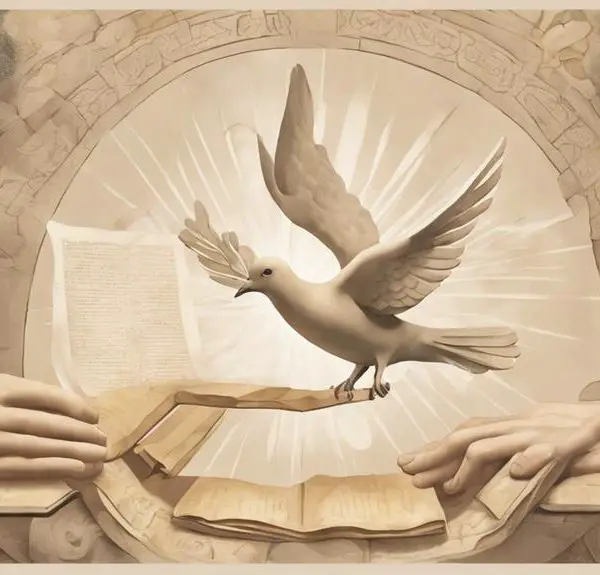

Sign up